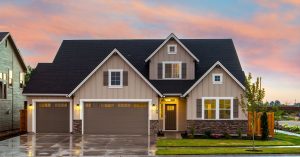
When your house sinks, you are experiencing subsidence. Your house’s foundations may become misaligned as the ground sinks. It can be particularly problematic when the ground under your property sinks at different rates.
Heave, in which parts of the ground under your home shift upwards and cause your foundations to rise, is not the same as subsidence. Additionally, it differs from landslips and landslides, where the ground your house was built on moves down a slope or is washed away.
Subsidence and settlement are also distinct. Subsidence is characterized by the downward movement of a building’s foundations caused by instabilities in the soil beneath them. This is what the Financial Ombudsman Service describes as subsidence. Settlement refers to an upward movement of the soil caused by the weight of a building within ten years of construction. As most home insurance policies do not cover the settlement, it is essential to know the difference.
A variety of factors, including the type of soil in which they sit and the climate in which they reside, can increase the chance of a home sinking.

The answer is yes. Legal action is all that needs to be taken. Here are some suggestions!
Keep an eye out for signs of subsidence when you are viewing properties. If you want to know if the house has suffered subsidence, speak directly to the seller and estate agent. Consider getting a complete building survey done if you are interested in buying a property that you suspect may have subsidence. This will tell you whether there is any risk of subsidence. You’ll need to hire a surveyor to determine whether subsidence is present; your mortgage lender’s valuation is not a survey of the property’s condition or structure.
If there have been previous repairs for subsidence, your conveyancing solicitor should ask the vendor for legal documents verifying the repairs were made by the Building Research Establishment’s standard. Completion certificates for properties that have been underpinned and Certificates of Structural Adequacy for claims made under insurance should also be presented. You will need to be informed of the guarantees with the repairs.
Conveyancers will have access to a property’s current insurance company and coverage. If your options are limited or the policies are more expensive, you should shop around to learn what your options are – an insurance broker may be helpful in this regard.

You can buy a house without subsidence if you follow these steps! We hope this article will assist you in an informed decision about how to buy a house with subsidence and the causes of subsidence.
However, it is the easiest solution to resolve subsidence caused by tree roots if you consult a surveyor and a tree surgeon before doing so. You could worsen the situation if you get it wrong and create more instability.
You can take a couple of steps to reduce the risk of your property sinking if you live in a house that is at risk of subsidence. First, keep the trees away from your house. You shouldn’t plant trees closer than 10 meters to your home, and more giant trees should not be planted within 40 meters. Secondly, try to collect water. You can avoid waterlogging your soil by using water butts. You should also keep your gutters, pipes, and plumbing in good condition to avoid leaks.